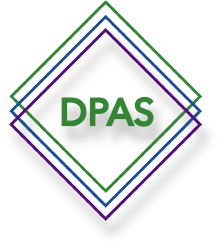While AI still has a long way to go before it reaches its full potential, its current capabilities are nothing short of outstanding. If we could go back in time and demonstrate to ourselves 10 years ago what the tech can achieve today, our minds would be blown. It’s no surprise, therefore, that in this day and age, organisations of all shapes and sizes are leaping at the chance to reap some of AI’s benefits for themselves. Businesses everywhere are picking up artificial intelligence to boost their productivity and efficiency in a race to learn how to use it to their advantage, otherwise risking being left behind. Coca-Cola, for example, just released a new Christmas advert created by generative AI. As more businesses seek to wield the potential that Gen AI holds, a structured and purpose-driven approach is absolutely essential.
What are AI Fusion Skills?
In the 2024 Harvard Business Review article written by H. James Wilson and Paul Daugherty, AI Fusion Skills are introduced as the core competencies needed for you to effectively and strategically integrate Gen AI into the workforce. These skills—intelligent interrogation, judgement integration, and reciprocal apprenticing—equip you to gain genuine value from AI interactions, steering clear of random, directionless approaches that fail to capitalise on AI’s capabilities.
Here, I explore each of these three skills set out by Wilson and Daugherty, and discuss how they come into play regarding modern organisations’ use of Gen AI.
What is Intelligent Interrogation?
This skill refers to asking targeted questions that elicit valuable, actionable responses. Intelligent interrogation is about guiding the AI by crafting questions that extract meaningful insights rather than taking a scattershot approach that may yield irrelevant or unrefined results. By asking purposeful questions, employees can dodge the pitfalls of randomly probing the AI and instead see an exchange that aligns with business objectives and project goals.
Intelligent interrogation is crucial in preventing the common trap of “AI trial and error,” where AI outputs are taken at face value without much consideration for context or quality. For example, a marketing professional using generative AI to generate campaign ideas can optimise outcomes with prompts that specify customer demographics, brand voice, and desired outcomes. This also helps employees identify biases or blind spots in the AI’s response.
For organisations, cultivating this skill involves providing teams with tools and training to improve overall AI literacy. Employees who understand the nuances of question formulation and can apply this skill strategically create a structured exchange with AI, leading to more relevant and meaningful outputs.

What is judgement integration?
Generative AI can be remarkably insightful, but it often lacks the human ability to contextualise outputs within a broader decision-making framework. Judgement integration involves blending AI’s analytical and creative capabilities with human expertise and experience, adding a layer of ethical, cultural, and strategic awareness that AI simply cannot provide by itself. Rather than adopting a passive approach where AI-generated insights are taken as they come, this skill enables you to act as a curator, determining which AI-generated ideas align best with your broader goals and values.
This is essential for businesses looking to use AI in a way that enhances, rather than diminishes, human decision-making. For example, in healthcare, AI might analyse data to identify treatment options, but it is up to human clinicians to weigh these suggestions against patient needs, medical ethics, and experiential knowledge. Through this skill, organisations avoid indiscriminately applying AI insights, instead ensuring that outputs are critically evaluated, and that human judgement informs decisions where needed.
Building judgement integration within a workforce requires ongoing training in critical thinking, ethics, and domain-specific expertise, enabling employees to benefit from Gen AI outputs while sensibly maintaining oversight and discretion. This ensures that organisations use AI thoughtfully, adding genuine value to the decision-making process and avoiding the mistakes that may spawn from a purely automated approach.
What is reciprocal apprenticing?
The third AI Fusion skill, reciprocal apprenticing, reimagines the relationship between humans and AI as one of mutual learning and growth. Unlike static AI models, Gen AI systems can evolve in response to feedback, and employees, in turn, can adapt and grow their own capabilities through these interactions. In reciprocal apprenticing, both human users and AI systems learn from one another, bringing about iterative improvements that add lasting value to the organisation.
Reciprocal apprenticing avoids the passive, tool-focused AI interaction and instead encourages an active, dynamic relationship. An employee working with a Gen AI on product design, for instance, might refine their approach based on the AI’s novel suggestions, while simultaneously providing feedback that helps the AI improve future iterations. This symbiotic interaction helps employees gain new perspectives, helping to boost innovation and creativity.
Organisations can support reciprocal apprenticing by encouraging experimentation and iteration in AI interactions. Employees can be trained to provide feedback on AI outputs, creating a culture of continuous improvement that benefits both parties. Through this approach, organisations change the AI-user relationship into a partnership where learning and adaptation drive innovation and growth.

A framework for structured AI interaction
In an era where Gen AI is poised to reshape entire industries, the adoption of AI Fusion skills can be a decisive factor in determining whether organisations derive meaningful value from these technologies. Rather than relying on a random, trial-and-error approach, intelligent interrogation, judgement integration, and reciprocal apprenticing provide a structured framework that empowers teams to navigate AI interactions with purpose and precision. These skills enable organisations to maximise the advantages of Gen AI, transforming it from a mere tool into a strategic asset.
For business leaders, pursuing AI Fusion skills means investing in training and creating an environment where employees view AI as a collaborative partner rather than a standalone solution. Through a commitment to building these core competencies, organisations can ensure that their teams engage with Gen AI in a way that enhances creativity, supports sound decision-making, and drives sustainable growth. By focusing on these skills, companies position themselves to add genuine value with every AI interaction, ensuring that Gen AI not only complements but also elevates human expertise in the workplace. This approach to AI integration will prove integral in navigating generative AI, where the quality of human-AI interactions becomes a key determinant of competitive advantage and long-term success.
We at DPAS can provide a variety of AI training for your staff. Whether you want your staff to learn the data protection considerations they need to be aware of when using AI, or simply just how to use AI in your business, we have what you’re looking for.
If you need to enhance your business’s knowledge of artificial intelligence and how to use it to your advantage, book onto one of our courses today.
By Nigel Gooding
LLM Information Rights Law & Practice. FBCS, PG Dip Information Rights Law and Practice, PG Cert Data Protection Law and Information Governance, PG Cert Management









